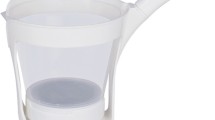Summary
In the evaluation of prostatism urodynamics and especially uroflowmetry has received widespread attention. Review of the literature, however, revealed little information on the consistency of flow variables. Therefore eleven male volunteers above fifty years of age were asked to void five times during a short period of time. Each subject was found to reproduce his own flow curve fairly well. Statistical analysis of various flow variables, i.a. Q1s, Qmax, volume-corrected Qmax, Qmax time, Qave and volume voided, demonstrated a high degree of reproducibility. In conclusion a single flow curve is sufficient for clinical routine on the assumption that the patient declares the voiding to be typical.
Similar content being viewed by others
References
Backman K-A (1965) Urinary flow during micturition in normal women. Acta Chir Scand 130:357–370
Drach GW, Layton TN, Binard WJ (1979) Male peak urinary flow rate: Relationships to volume voided and age. J Urol 122:210–214
Dutartre D, Susset JG (1974) Reproductibilité des courbes de débitmétrie urinaire. J Urol Nephrol (Paris) 80:484–494
Garrelts B von (1957) Micturition in the normal male. Acta Chir Scand 114:197–210
Heinz A, Hallwachs O (1982) Uroflowmetrie: Der Einfluß der Tageszeit auf die Harnstrahlmessung. Urologe (B) 22:141–142
Jensen KM-E, Bruskewitz RC, Iversen P, Madsen PO (1983) Abdominal straining in benign prostatic hyperplasia. J Urol 129:44–47
Jensen KM-E, Nielsen KK, Jensen H, Pedersen OS, Kratup T (1983) Urinary flow studies in normal kindergarten-and schoolchildren. Scand J Urol Nephrol 17:11–21
Layton TN, Drach GW (1981) Selectivity of peak versus average male urinary flow rates. J Urol 125:839–841
Layton TN, Drach GW (1983) Urinary flow rates. Measurement and adjustment. In: Hinman F (ed) Benign prostatic hypertrophy. Springer, Berlin Heidelberg New York, Chapter 48, pp 523–527
Nordling J, Walter S (1977) Repeated, rapid fill CO2-cystometry. Urol Res 5:117–122
Poznanski E, Poznanski AK (1969) Psychogenic influences on voiding: Observations from voiding cystourethrography. Psychosom 10:339–342
Rehfisch E (1897) Über den Mechanismus des Harnblasenverschlusses und der Harnentlernung. Arch Pathol Anat Physiol Klin Med 150:111–151
Ryall RL, Marshall VR (1982) Normal peak urinary flow rates obtained from small voided volumes can provide a reliable assessment of bladder function. J Urol 127:484–488
Shoukry K, Susset JG, Elhilali MM, Dutartre D (1975) Role of uroflowmetry in the assessment of lower urinary tract obstruction in adult males. Br J Urol 47:559–566
Siegel S (1956) Nonparametric statistics for the behavioral sciences. McGraw-Hill, New York
Siroko MB, Krane RJ (1983) Hydrodynamic significance of flow rate determination. In: Hinman F (ed) Benign prostatic hypertrophy. Springer, Berlin Heidelberg New York, Chapter 47, pp 507–522
Siroky MB, Olsson CA, Krane RJ (1979) The flow rate nomogram: I. Development. J Urol 122:665–668
Siroky MB, Olsson CA, Krane RJ (1980) The flow rate nomogram: II. Clinical correlation. J Urol 123:208–210
Smith JC (1966) The measurement and significance of the urinary flow rate. Br J Urol 38:701–706
Straub LR, Ripley HS, Wolf S (1949) Disturbances of bladder function associated with emotional states. JAMA 141:1139–1143
Wein AJ, Hanno PM, Dixon DO, Raezer D, Benson GS (1978) The reproducibility and interpretation of carbon dioxide cystometry. J Urol 120:205–206
Author information
Authors and Affiliations
Rights and permissions
About this article
Cite this article
Jensen, K.M.E., Jørgensen, J.B. & Mogensen, P. Reproducibility of uroflowmetry variables in elderly males. Urol. Res. 13, 237–239 (1985). https://doi.org/10.1007/BF00261583
Accepted:
Issue Date:
DOI: https://doi.org/10.1007/BF00261583




